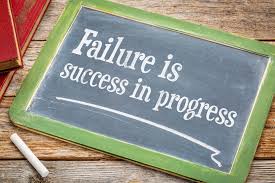Failure used to be something you kept quiet about. A project collapsed, a promotion slipped away, or an idea got rejected—you moved on, hoping no one remembered. That pattern is breaking. In today’s workplace, mistakes are no longer buried. They are studied, shared, and sometimes even celebrated. The shift is similar to the way people follow the ups and downs of a live cricket match today india, where both wins and losses are part of the larger story. Careers are starting to work the same way.
Why Failure Is Getting Reframed
One reason failure looks different now is speed. Industries move fast. New tools and systems appear, markets change quickly, and jobs themselves shift in meaning. With that pace, failure becomes unavoidable. The question is no longer whether mistakes will happen but how people respond when they do.
Another factor is competition. If everyone plays it safe, growth slows. Organizations are realizing that progress often depends on employees who are willing to risk being wrong. A failed experiment might waste a few weeks. But staying cautious can cost years of missed opportunities.
What Failure Teaches That Success Does Not
Success hides flaws. If a team delivers results, no one asks too many questions. But failure exposes the weak spots. It shows where planning was thin, where communication broke down, or where resources weren’t enough. That clarity can be uncomfortable, but it is useful.
For individuals, the lessons often go beyond the job itself. Someone who has failed learns how to make decisions with limited information. They become better at handling pressure. They learn not to freeze when outcomes look uncertain. These skills don’t come from comfort—they come from friction.
Risk and Career Growth Go Together
Growth almost always requires risk. A person moving to a new industry, pitching an unfamiliar idea, or stepping into leadership cannot know the outcome in advance. Failure is part of the price. Those who never take the risk avoid the setback, but they also avoid the chance of a major leap forward.
This explains why careers that look impressive on the surface often include rough chapters underneath. A failed startup before a successful one. A job loss before a better opportunity. A poor decision that later shaped judgment. The failures become markers of movement rather than signs of weakness.
How Workplaces Handle Failure
The way organizations react to mistakes matters. In rigid environments, employees learn to cover errors. Problems stay hidden, and the same issues repeat. In more open workplaces, failure is treated as data. Teams break down what happened, ask direct questions, and move on with a clearer strategy.
This approach does not mean carelessness is rewarded. It means failure is seen as part of the process. The line is clear: failing once while trying something new can be valuable; failing in the same way repeatedly without learning is not.
Stories That Shift the Narrative
When leaders talk about their own failures, the culture changes. Hearing that someone at the top once lost a key client or made a poor decision sends a signal. It shows that setbacks can be survived, and more than that, they can set the stage for growth.
These stories work because they humanize success. They remind employees that progress is not a straight climb. It zigzags. Sharing the rough parts helps normalize the idea that failure is not the opposite of success but part of it.
The Limits of Celebrating Failure
It is important not to romanticize failure. Not every mistake is useful. A failed project with no reflection is just wasted time. A repeated error caused by neglect can damage careers and teams. The value of failure comes from analysis and adjustment. Without that, failure is simply loss.
Another limit is context. Some industries are more forgiving of mistakes than others. Tech startups can afford trial and error. Fields with higher stakes, like medicine or engineering, cannot take the same approach. The culture of learning from failure has to fit the reality of the work.
Looking Ahead
The idea that failure can be a badge of success is still developing. Younger workers often accept it more easily, while older structures may resist. But the trend is clear. The modern career is less about never stumbling and more about building the capacity to recover and continue.
In the end, the measure of success is shifting. Achievements matter, but the ability to endure and learn from setbacks is now seen as equally important. Failure is not the end of the path. It is part of the route.
